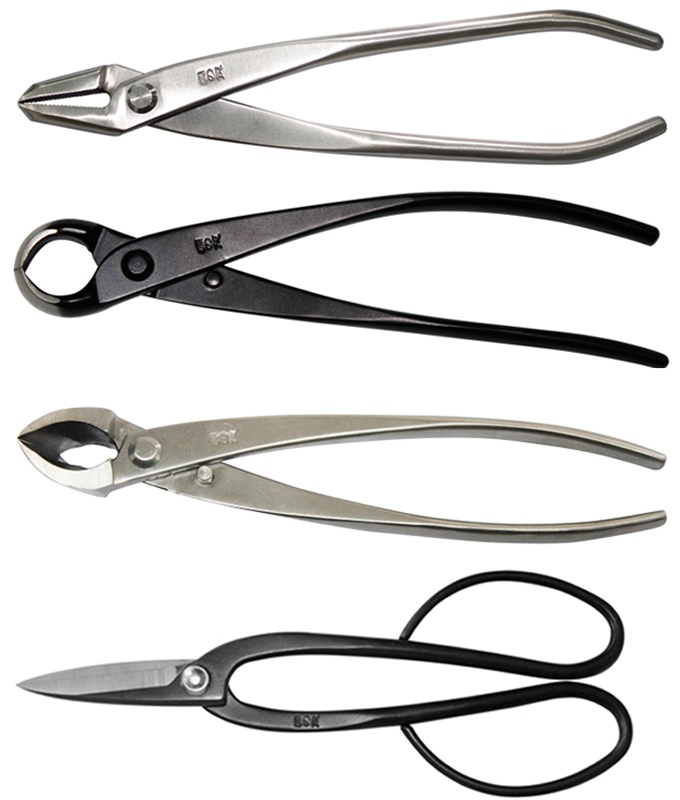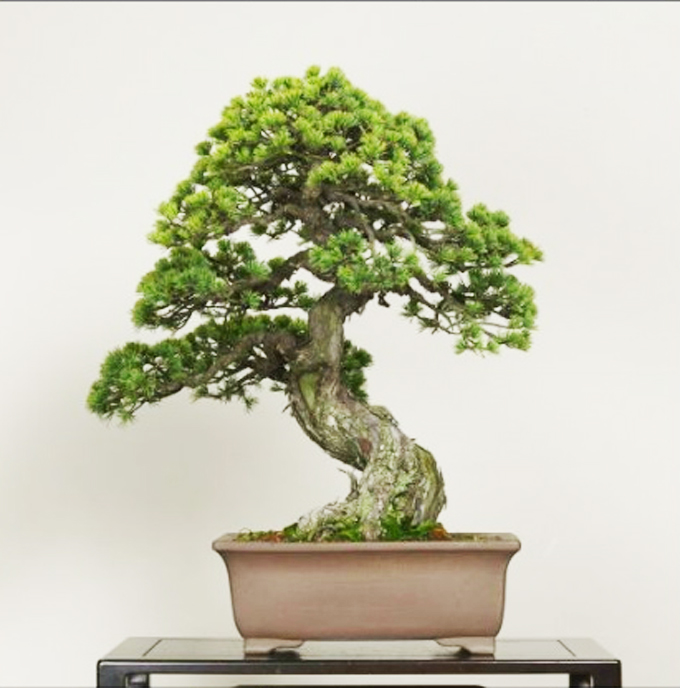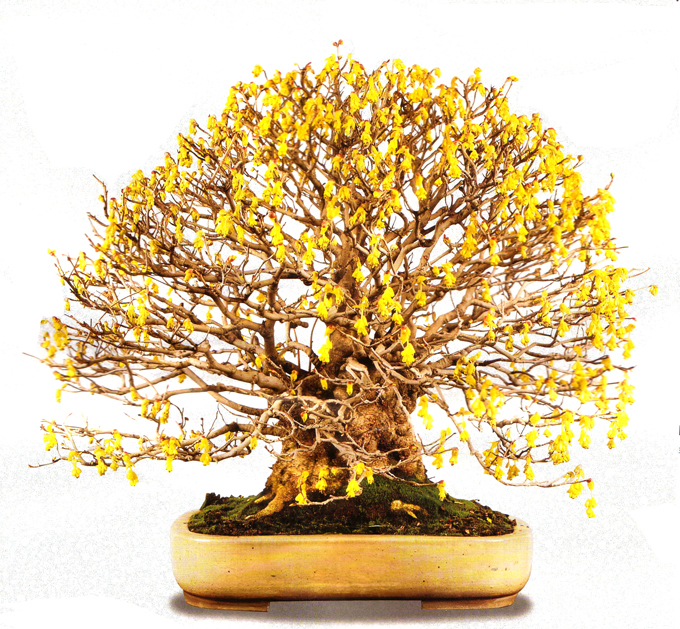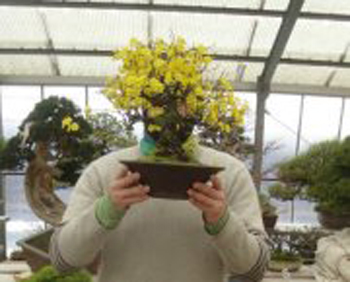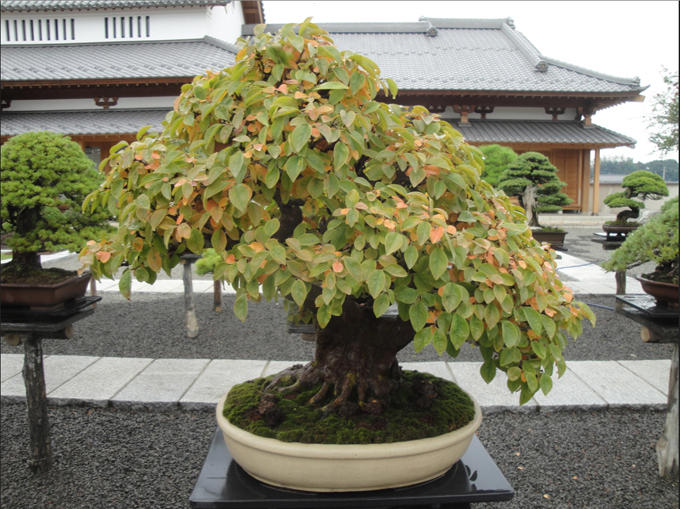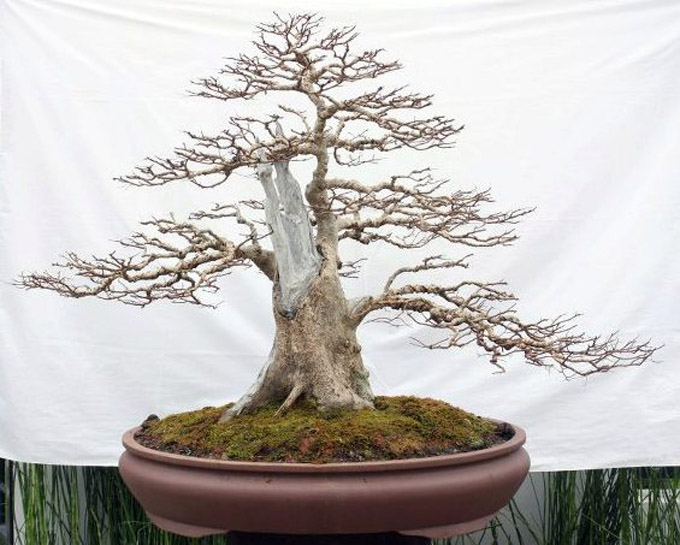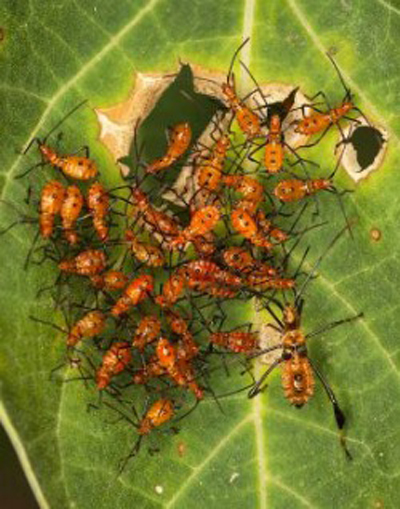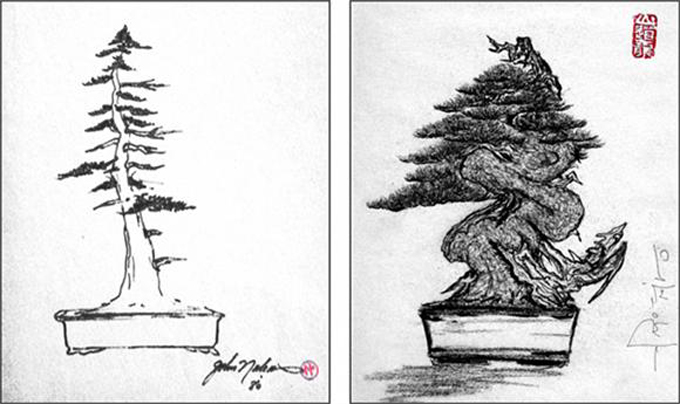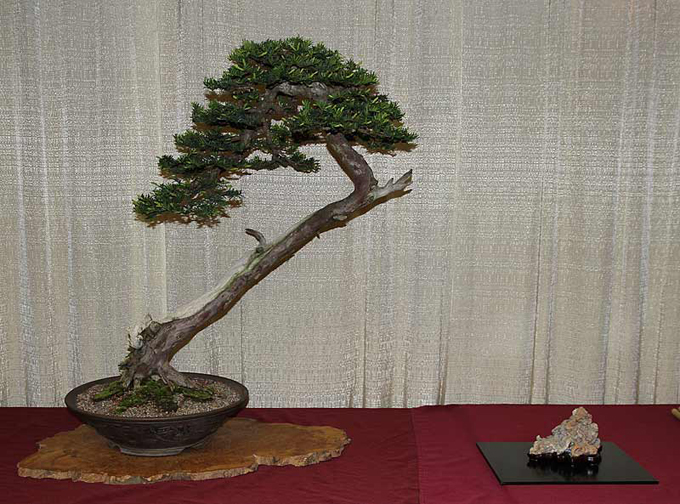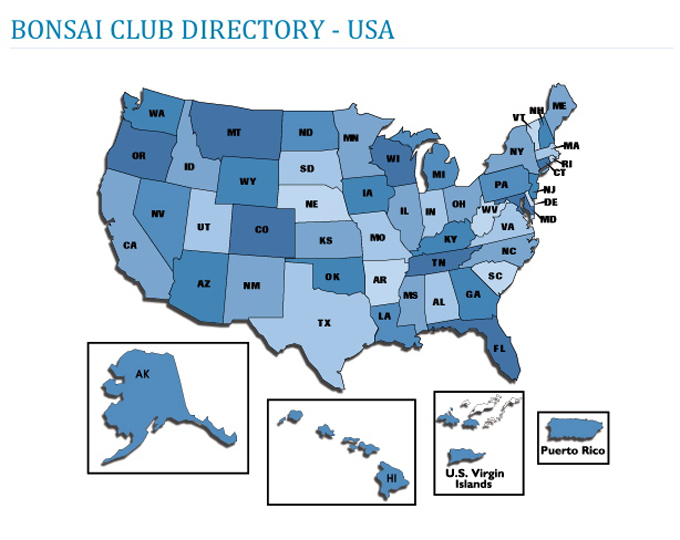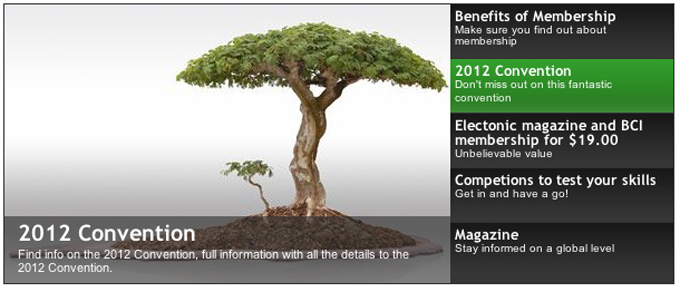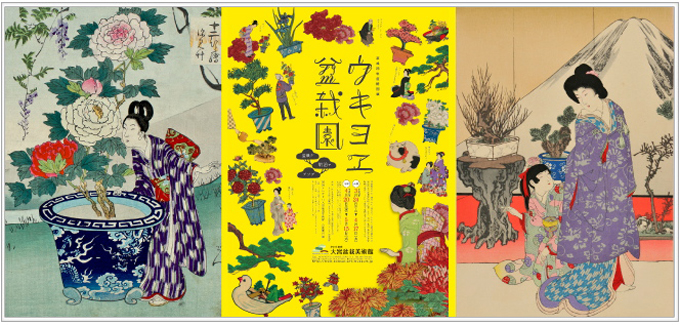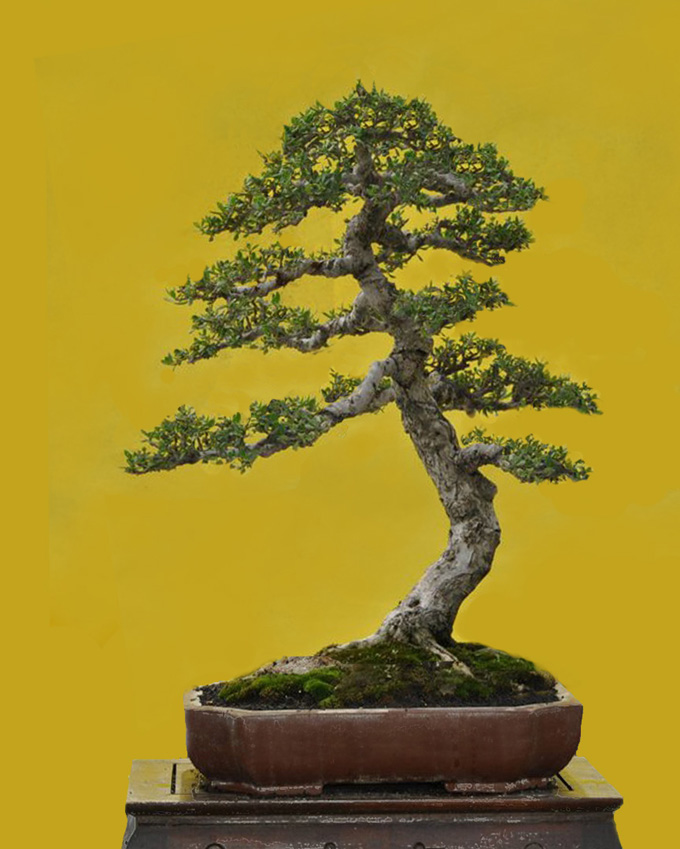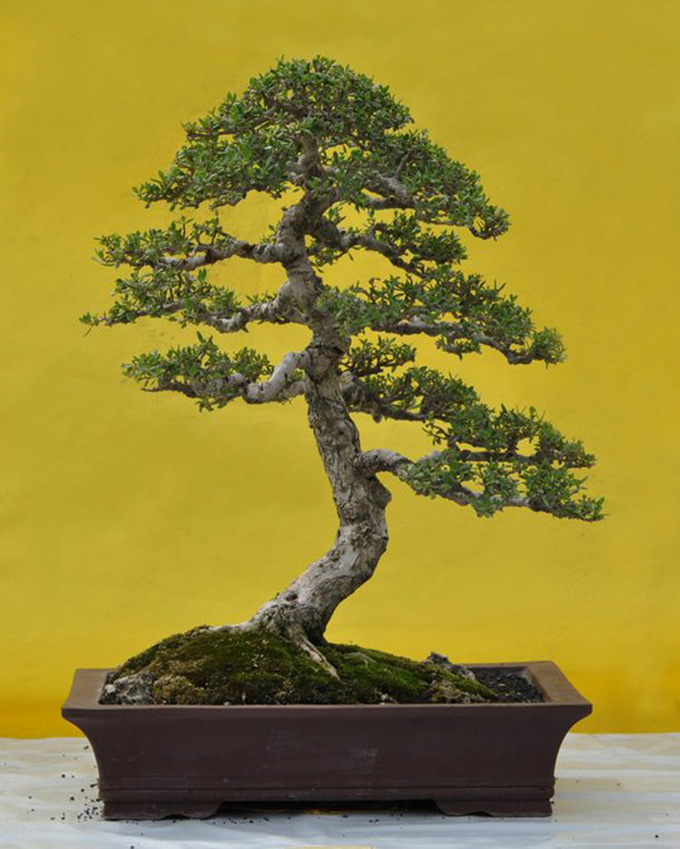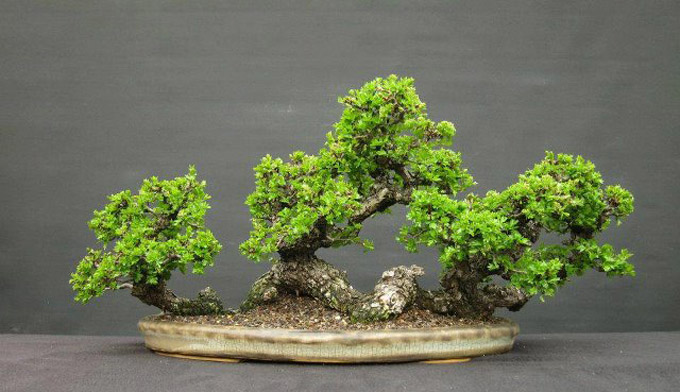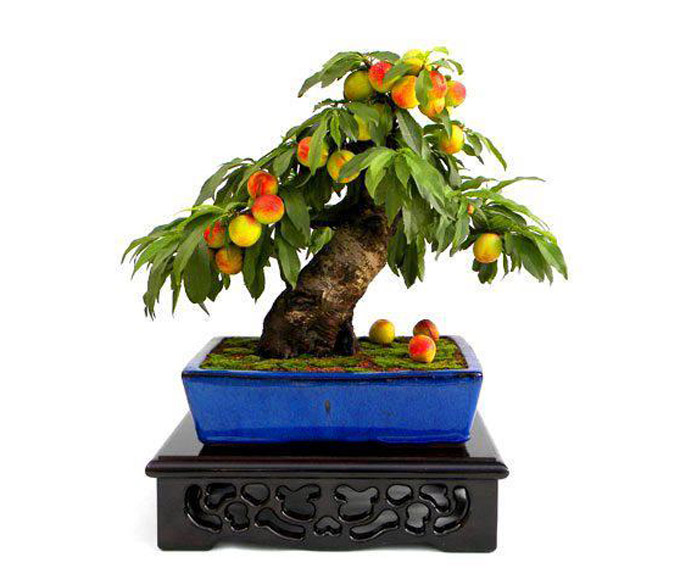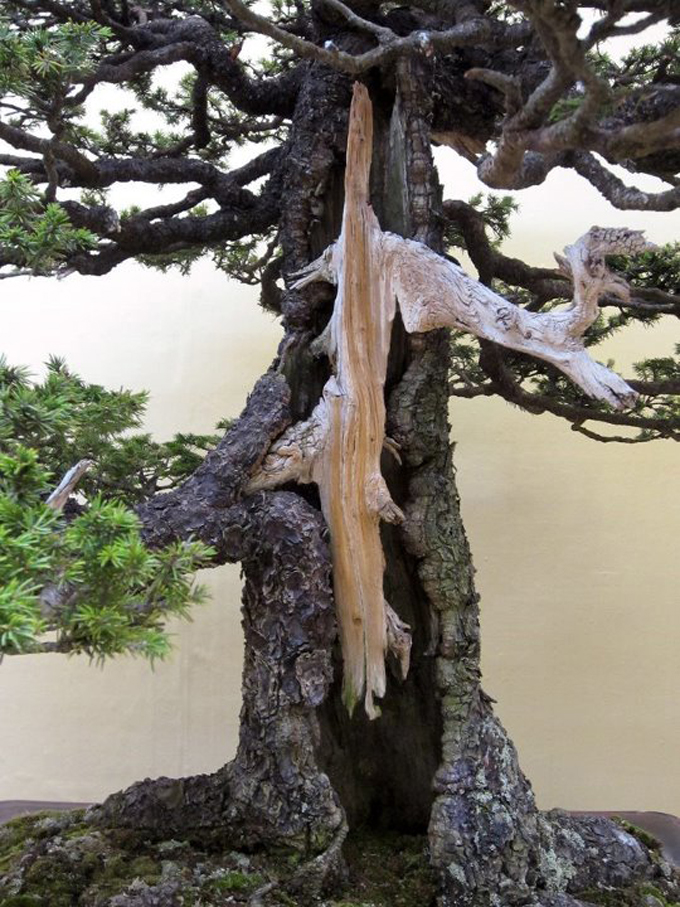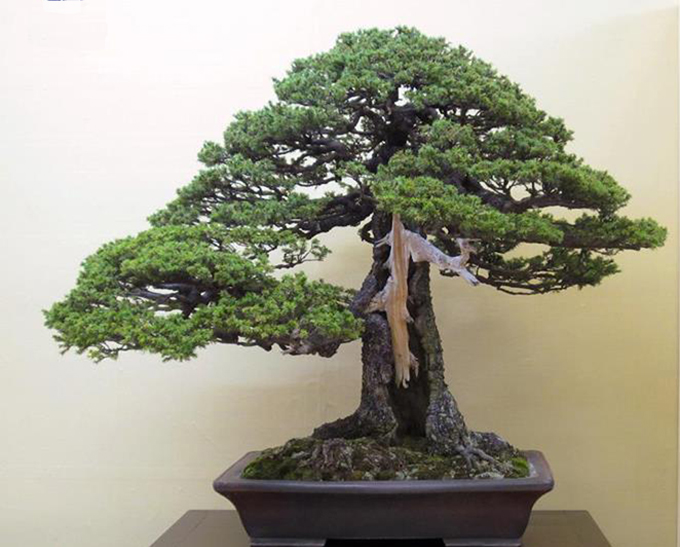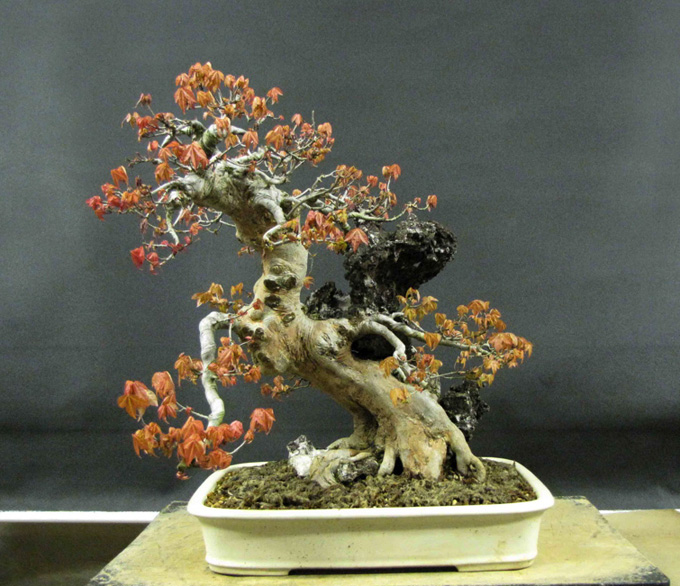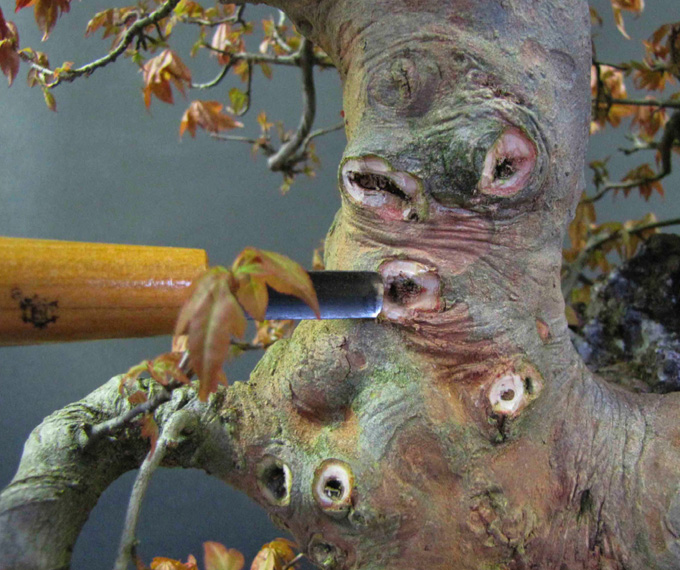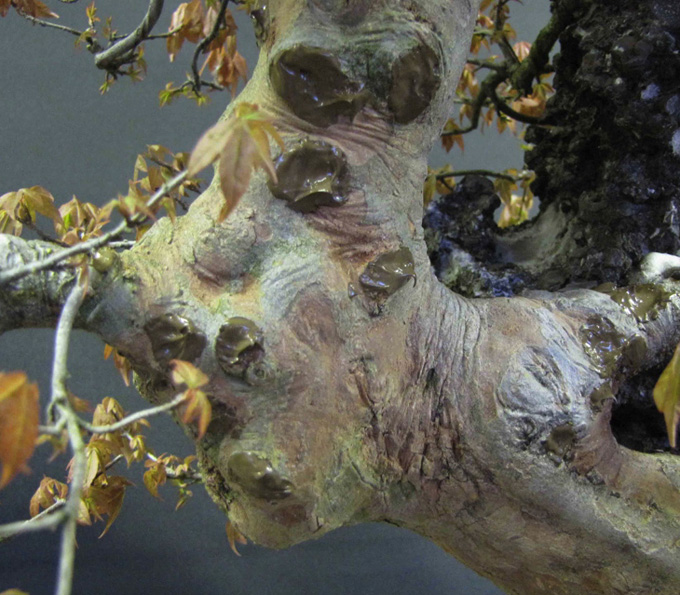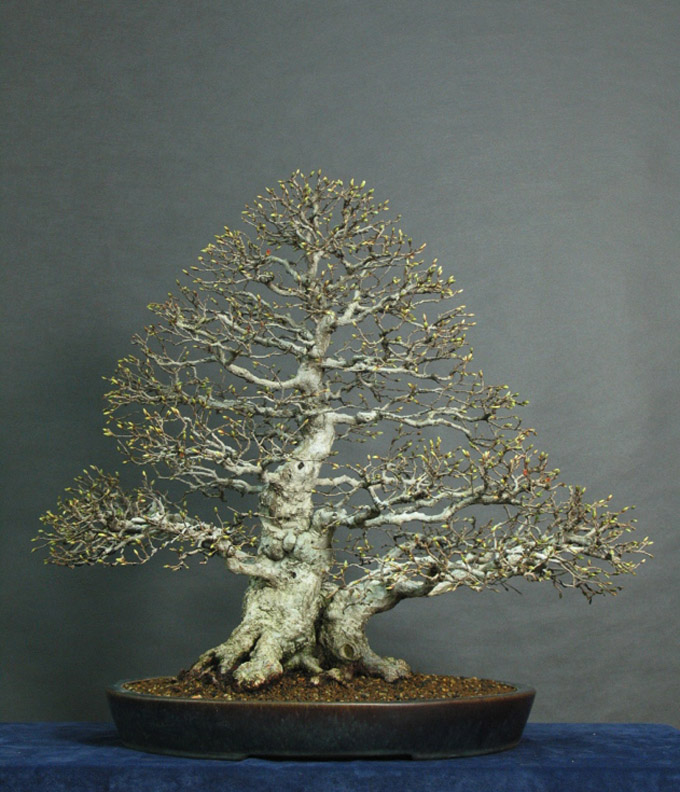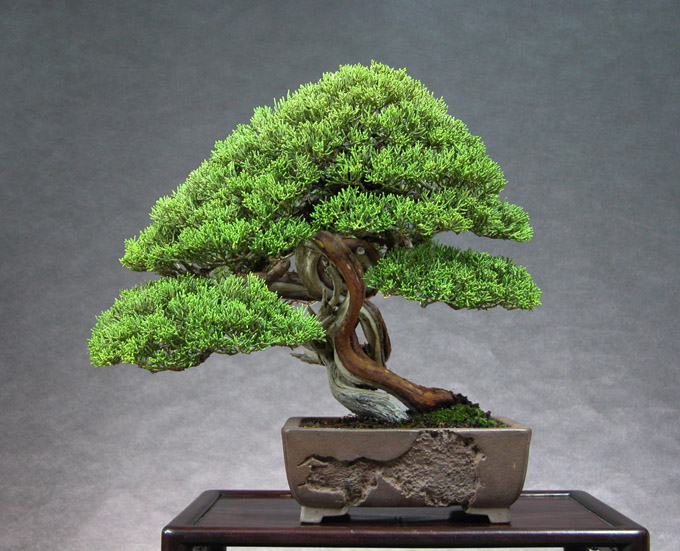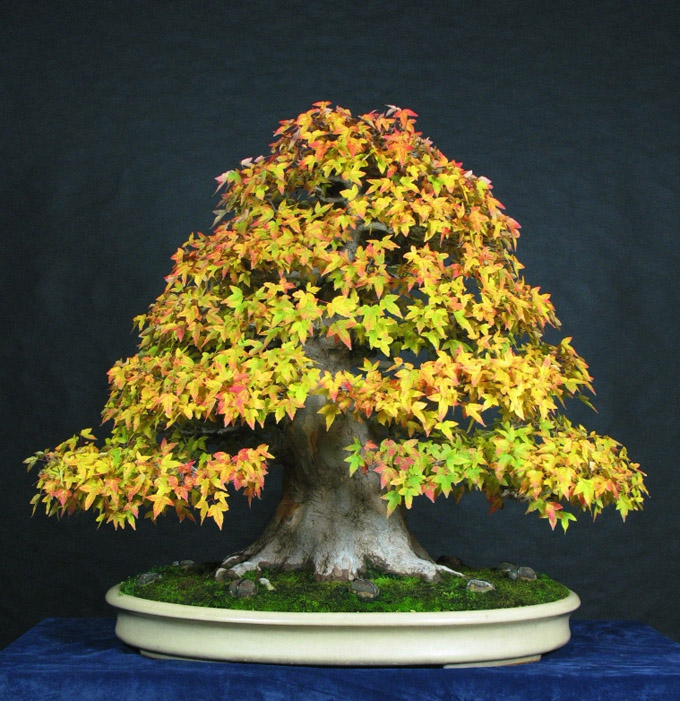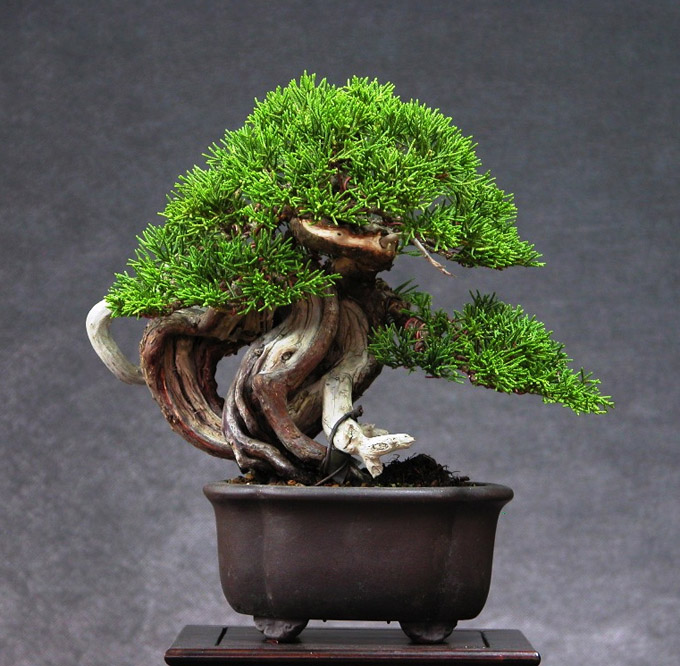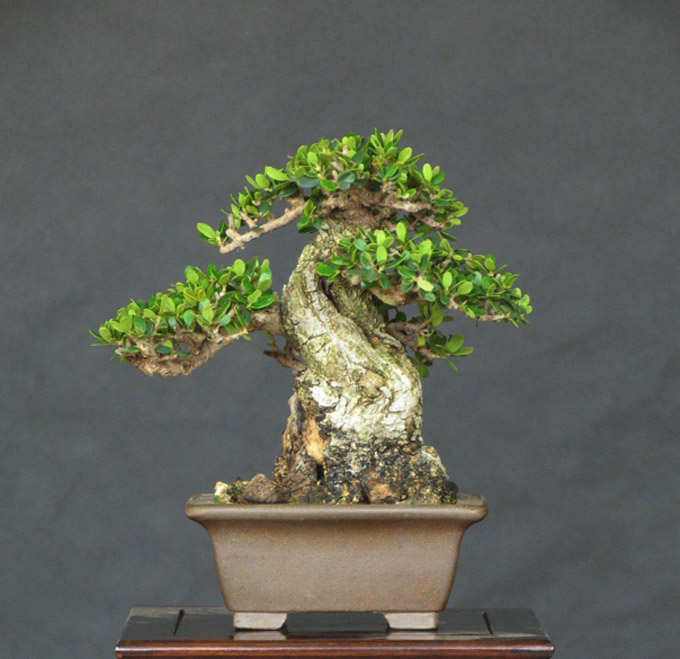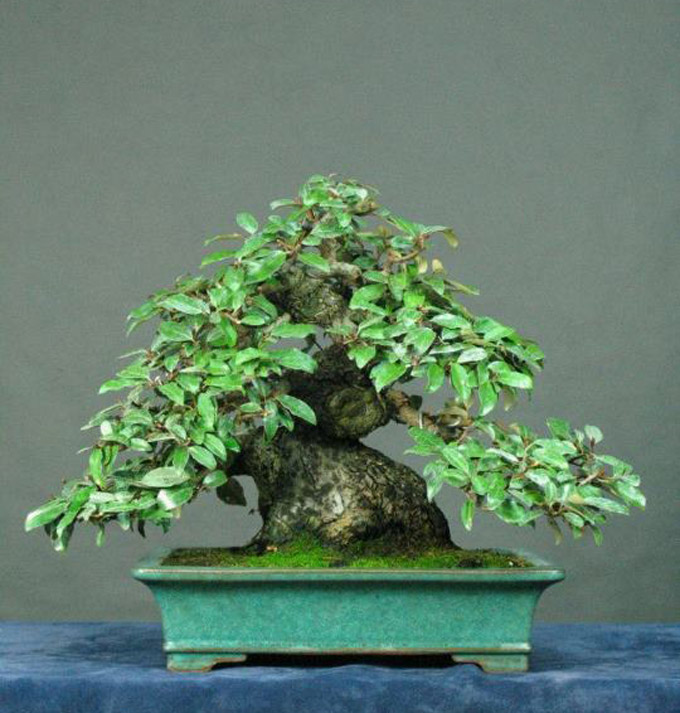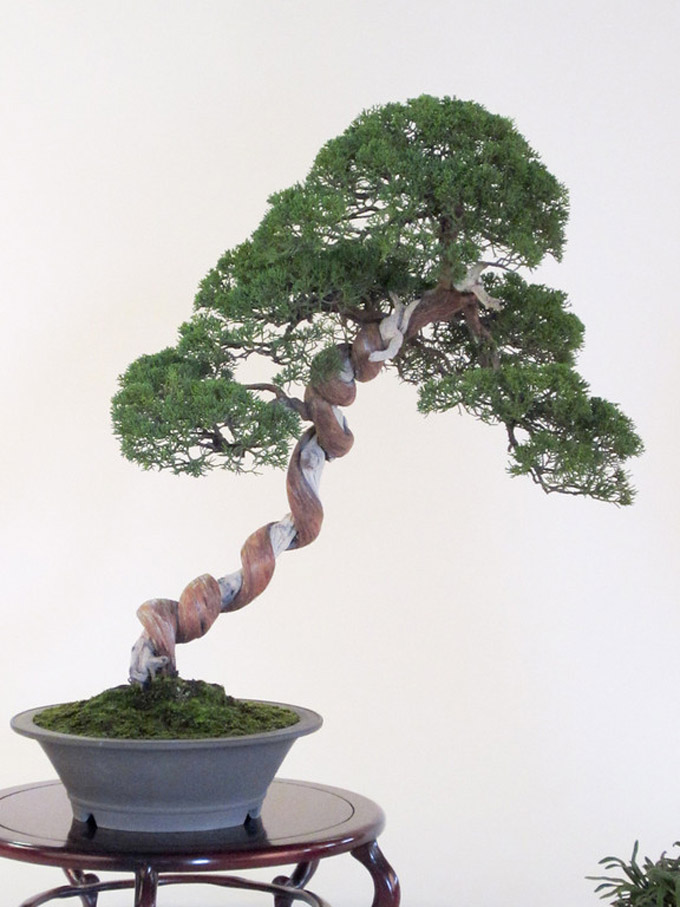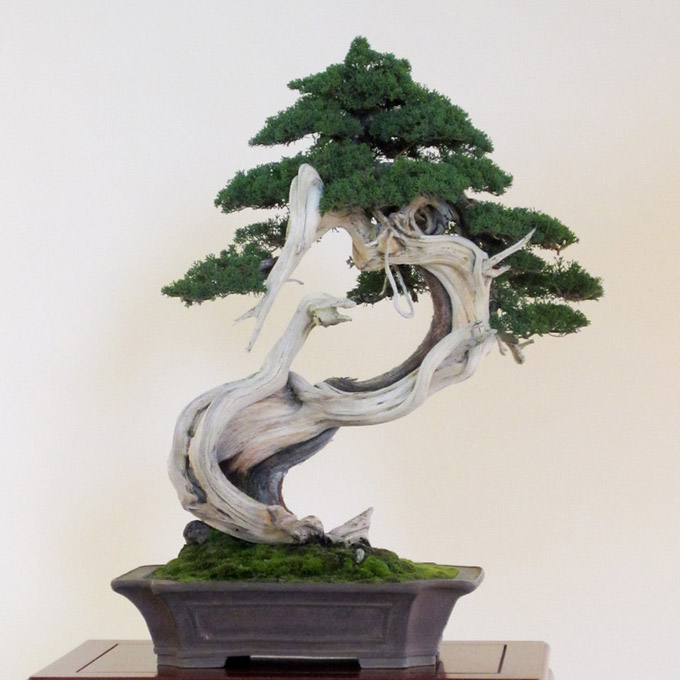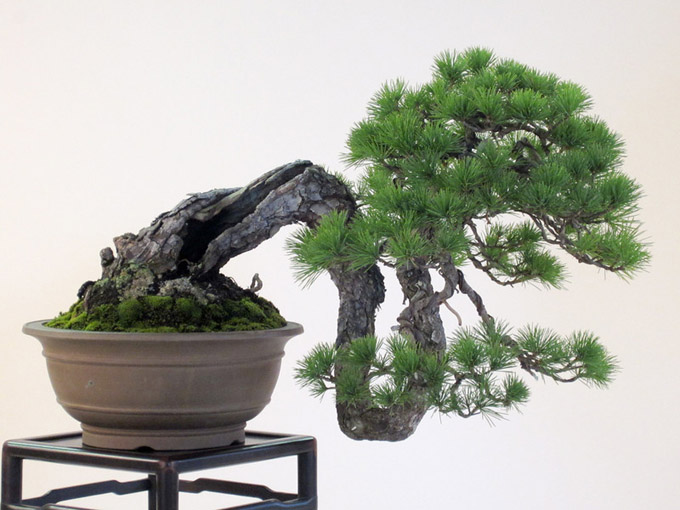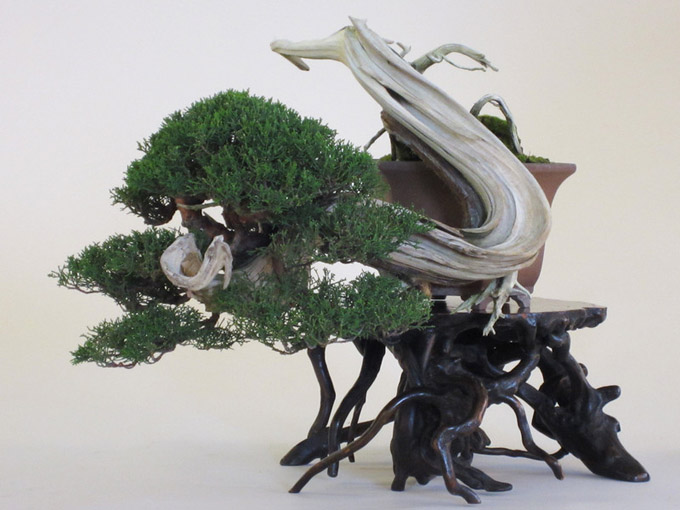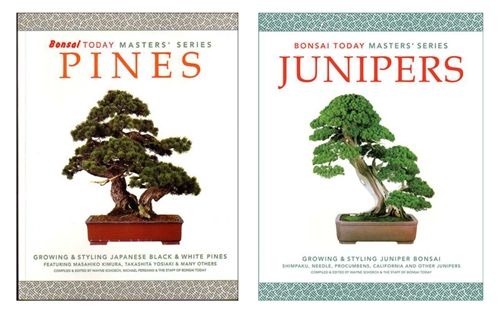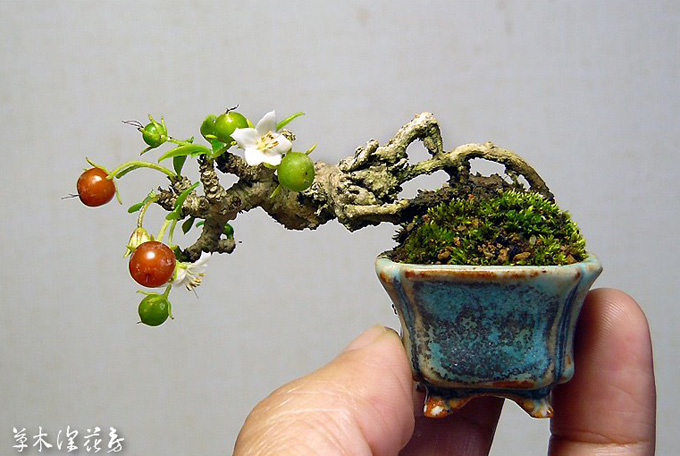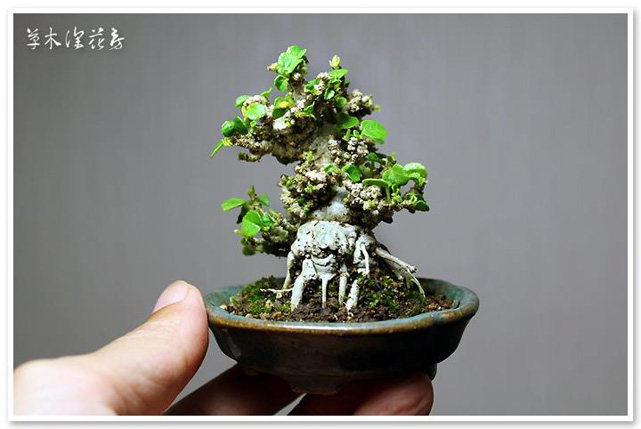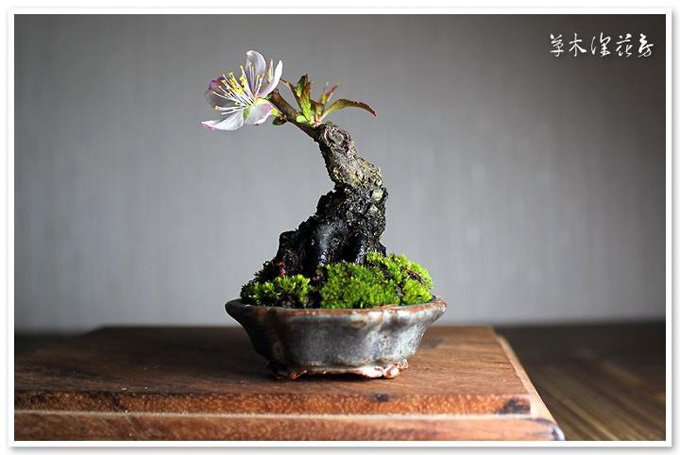 Dynamic movement. There’s something compelling about the shape and sense of movement expressed by this Carlos van der Vaart tree, even though the trunk’s somewhat uniform corkscrew effect gives me pause. I originally found this image on facebook, where the caption reads Carlos van der Vaart with Van Tuan Nguyen. It also appears in the gallery on Carlos’ website.
Dynamic movement. There’s something compelling about the shape and sense of movement expressed by this Carlos van der Vaart tree, even though the trunk’s somewhat uniform corkscrew effect gives me pause. I originally found this image on facebook, where the caption reads Carlos van der Vaart with Van Tuan Nguyen. It also appears in the gallery on Carlos’ website.
Our Stone Lantern warehouse is closed this week. Orders received this week will be shipped next week (the week of the 23rd) on a first-come, first-serve basis. Speaking of orders; don’t forget to fertilize your bonsai! Under-feeding leads to weak trees.
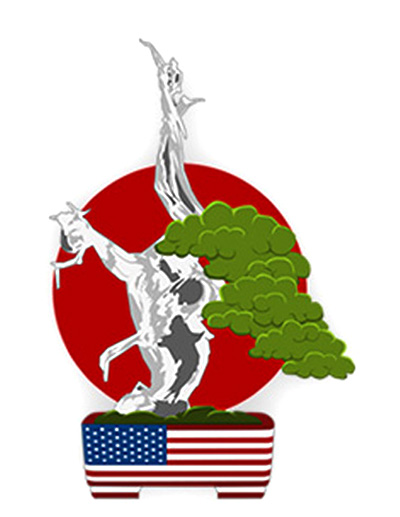 The Roots of Bonsai. The Bonsai Society of Dallas presents the LSBF 2012 Convention: The Roots of Bonsai, featuring Kathy Shaner, Michael Hagedorn and Ryan Neil (April 27-29). All three of these highly skilled bonsai artists studied in Japan and have a wealth of knowledge to share. As of yesterday, I’m told that some workshops are still open.
The Roots of Bonsai. The Bonsai Society of Dallas presents the LSBF 2012 Convention: The Roots of Bonsai, featuring Kathy Shaner, Michael Hagedorn and Ryan Neil (April 27-29). All three of these highly skilled bonsai artists studied in Japan and have a wealth of knowledge to share. As of yesterday, I’m told that some workshops are still open.
We’re saving this space. Send us information on your upcoming bonsai event <wayne@stonelantern.com>. If we like it (we like most of them) and especially if you provide a link or two, we’ll feature it here on Bonsai Bark.
 See you there. This promises to be one of the greatest bonsai events ever in the U.S. Maybe the greatest. June 9-10. The Fair Expo Center, Rochester, New York. Details here.
See you there. This promises to be one of the greatest bonsai events ever in the U.S. Maybe the greatest. June 9-10. The Fair Expo Center, Rochester, New York. Details here.
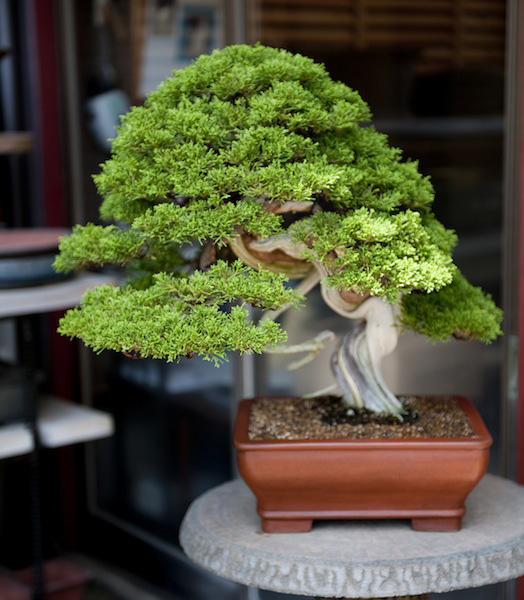 Photographing bonsai. Morten Albek, photographer, author and bonsai artist, has an enlightening article on photographing bonsai on Bonsai Empire’s website. Morten is one of the few photographers who seems to be able to effectively photograph bonsai in natural settings (without studio backdrops). This tree is a good example; there’s plenty of potential background noise, but the way the lighting and depth of field are used minimizes distraction. In addition to visiting Morten online, you can also enjoy his high quality bonsai photos in his excellent book, Majesty in Miniature: Shohin Bonsai.
Photographing bonsai. Morten Albek, photographer, author and bonsai artist, has an enlightening article on photographing bonsai on Bonsai Empire’s website. Morten is one of the few photographers who seems to be able to effectively photograph bonsai in natural settings (without studio backdrops). This tree is a good example; there’s plenty of potential background noise, but the way the lighting and depth of field are used minimizes distraction. In addition to visiting Morten online, you can also enjoy his high quality bonsai photos in his excellent book, Majesty in Miniature: Shohin Bonsai.
 Japanese Bonsai Pots. The cherry blossoms above and the pot below are from a blog titled Japanese Bonsai Pots. If you like beautiful (perhaps even museum quality) bonsai pots, you’ll like this blog.
Japanese Bonsai Pots. The cherry blossoms above and the pot below are from a blog titled Japanese Bonsai Pots. If you like beautiful (perhaps even museum quality) bonsai pots, you’ll like this blog.
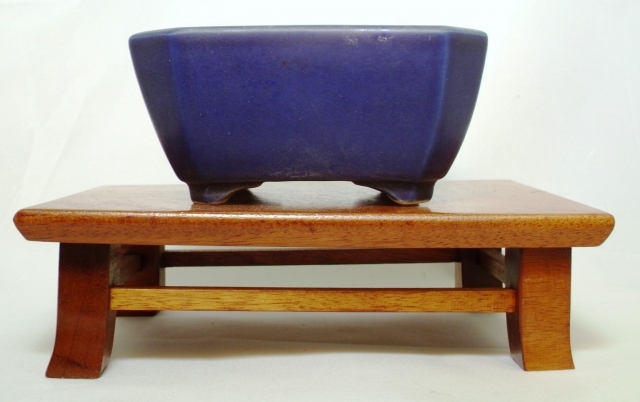
 BSF 39th Annual Convention. Featuring Ryan Neil, Peter Warren and Kora Dalager. May 25-28.
BSF 39th Annual Convention. Featuring Ryan Neil, Peter Warren and Kora Dalager. May 25-28.
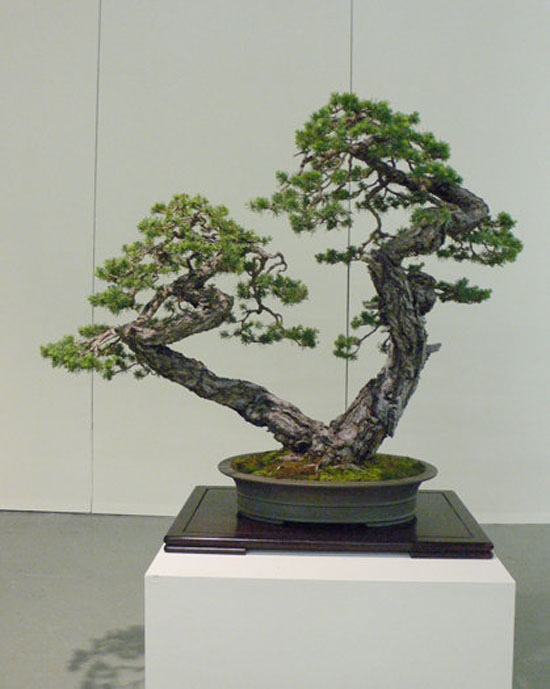 Whoops. Somehow I lost the source for this photo. Apologies to the owner, photographer and everyone else. However, lost or found, this is a wonderful twin trunk pine. Zigs, zags and all.
Whoops. Somehow I lost the source for this photo. Apologies to the owner, photographer and everyone else. However, lost or found, this is a wonderful twin trunk pine. Zigs, zags and all.
 Bonsai at the University of Michigan. Matthaei Botanical Gardans Bonsai & Penjing Collection. (the two bonsai photos above are by Carlos Diaz). Jerry Meislik (author of Ficus Bonsai) is the chairperson of the collection. You can visit Jerry’s site in addition to the Matthaei Botanical Gardens site, for information on the collection.
Bonsai at the University of Michigan. Matthaei Botanical Gardans Bonsai & Penjing Collection. (the two bonsai photos above are by Carlos Diaz). Jerry Meislik (author of Ficus Bonsai) is the chairperson of the collection. You can visit Jerry’s site in addition to the Matthaei Botanical Gardens site, for information on the collection.
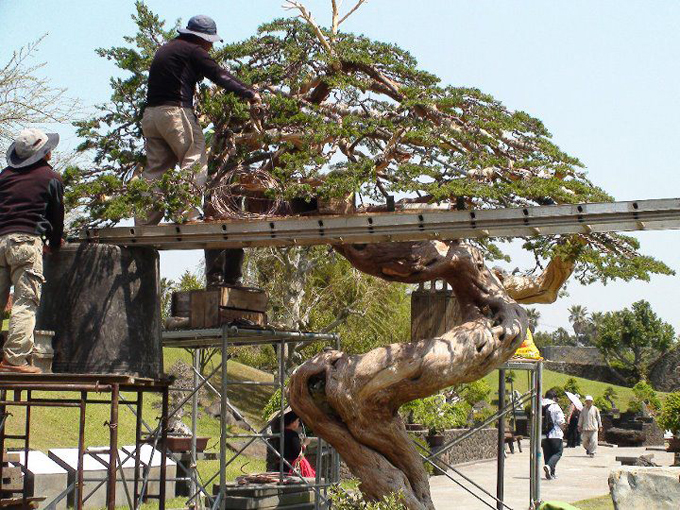 This monster is from the 2011 ASPAC. The photo is by Marcel Bebot Calungsud. It would be great to see a photo of the full tree, sans scaffolding.
This monster is from the 2011 ASPAC. The photo is by Marcel Bebot Calungsud. It would be great to see a photo of the full tree, sans scaffolding.
 Marc Noelanders is coming to Sydney. Tony Bebb too. The Tops-Weekend Workshops, August 24-26. Sponsored by the Illawarra Bonsai Society.
Marc Noelanders is coming to Sydney. Tony Bebb too. The Tops-Weekend Workshops, August 24-26. Sponsored by the Illawarra Bonsai Society.
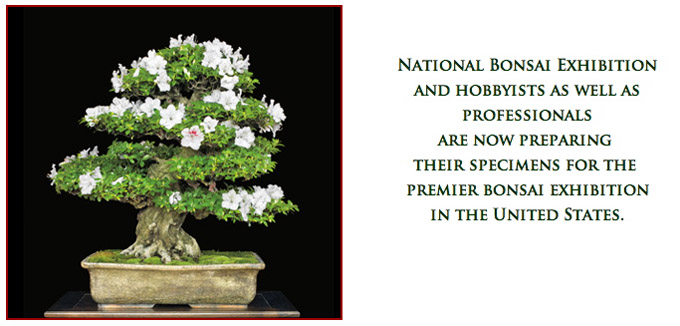 Mark your calendar for a world-class bonsai weekend. June 9th and 10th. Details here.
Mark your calendar for a world-class bonsai weekend. June 9th and 10th. Details here.
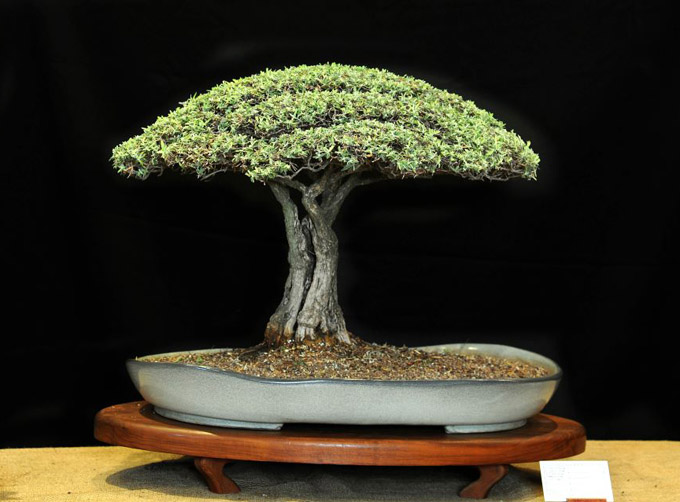 Sculpture. What comes to mind when I look at this manicured Buddleja is ‘sculptural bonsai.’ Though I don’t think it would ever be admitted to Kokufu-ten (Japans most famous bonsai exhibition) I do think it has something going for it. I especially like the wavy pot and the fluid split trunk (or is that two trunks?). It’s from Higurashi Jardineria Creativa on facebook. Here’s their website.
Sculpture. What comes to mind when I look at this manicured Buddleja is ‘sculptural bonsai.’ Though I don’t think it would ever be admitted to Kokufu-ten (Japans most famous bonsai exhibition) I do think it has something going for it. I especially like the wavy pot and the fluid split trunk (or is that two trunks?). It’s from Higurashi Jardineria Creativa on facebook. Here’s their website.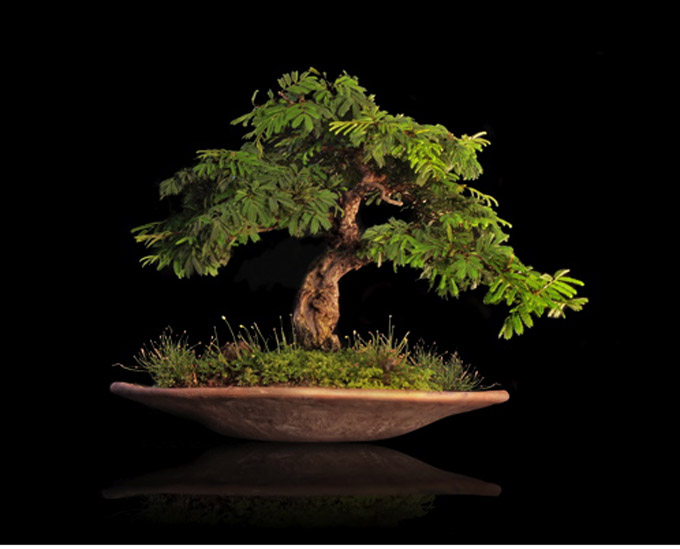 Simplicity. Here’s another sweet tree from Higurashi Jardinera Creativa. Aside from being something within the reach of us ordinary bonsai enthusiasts, what strikes me about this one is the way the soft somewhat shaggy foliage and the soft somewhat shaggy moss play together.
Simplicity. Here’s another sweet tree from Higurashi Jardinera Creativa. Aside from being something within the reach of us ordinary bonsai enthusiasts, what strikes me about this one is the way the soft somewhat shaggy foliage and the soft somewhat shaggy moss play together.